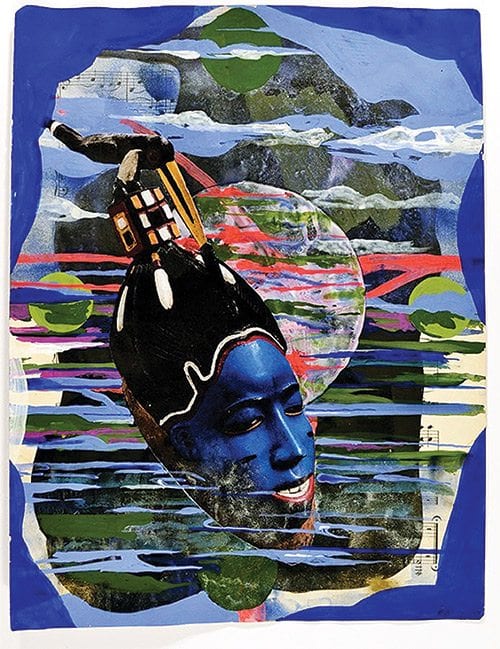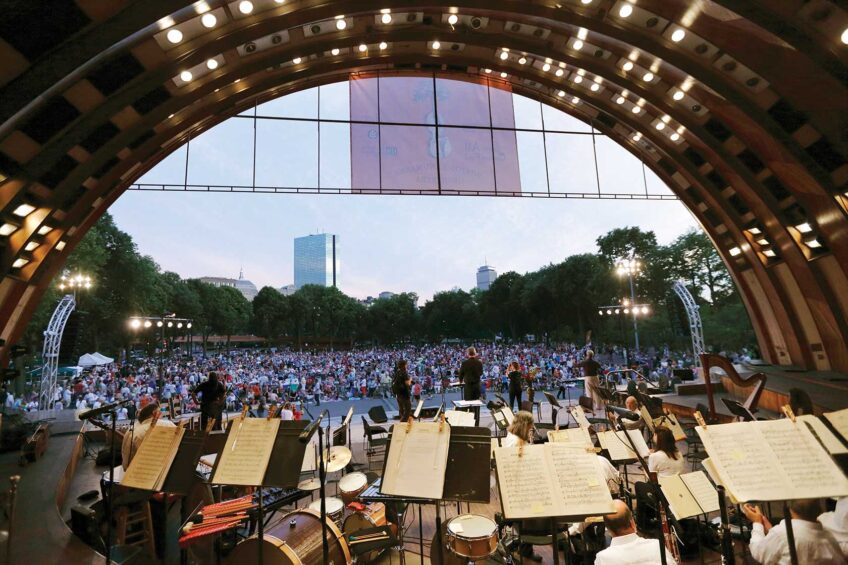
Samson Projects gallery on Thayer Street in the South End is no stranger to pushing boundaries. Their current show featuring multimedia artist Radcliffe Bailey does justice to their long history of avant-garde exhibitions. Through a mix of sculpture, collage and performance, Bailey revisits classic themes from African history through a contemporary lens. On view until May 28, the show radiates a fantastical quality that both softens and, by comparison, sharpens his critique of the history of slavery.
If you go
What: Multimedia artist Radcliffe Bailey
Where: Samson Projects Gallery, 450 Harrison Ave. in the South End
Hours: Wednesday to Saturday, 11 a.m. to 6 p.m. and by appointment
When: Through May 28
“Fourth Ward” is a seven-foot-tall door coated on one side in gold leaf with a heavy, rusted antique lock. The other side is a dull white, with a string of bottle-cap chain links nailed into it. Here, privilege and oppression stand next to each other, two sides of the same coin. The gold leaf is radiant, but diverges sharply from the heavy bolt, reminding viewers that unsettling foundations often are supporting the gilded elite. The chains made of bottle caps hammer this point further, as though saying it is the excess of the ruling class that binds the oppressed.
Blue blood
If “Fourth Ward” is the largest and most dense artwork, “Blue Black Blue Cool” packs an equally powerful punch in more delicate packaging. The piece is part of a performance Bailey does, but the remnants are preserved for the duration of the exhibition. A glass heart is mounted against the wall, a quarter full of deep, indigo “blood.” A trail of blue slides from the heart down to the floor, where it pools in an unsettling manner. The connection to the term “blue bloods” to mean the upper class is immediate. The piece seems to chart the slow drain of humanity from the slaveholders that turned African American history into a horror story. Only the blue stain of what once filled their empty organ remains.
One whole wall of the exhibit is devoted to Bailey’s Notes from Tervuren series. The set collages pictures of ancient statues with brightly-colored abstract landscapes, all on the backdrop of old jazz sheet music. In some cases the pieces are lighter and more satirical, such as the man in a suit who brandishes a gun alone on a boat in the middle of a cosmic colored seascape. Others demand reverence, like the dark portrait of a saxophone melting into what looks like black lava while spewing smoke from its mouth. Though the piece is painted on sheet music with the saxophone collaged in, the music isn’t visible here, underscoring the death, perhaps by appropriation, of a genre that once heralded artistic and cultural freedom.
Though working with dark material, the show avoids an oppressive, preachy feeling. Bailey uses the foundations of African culture and history but modernizes the material with eclectic textures, colors, and media. The work feels fresh and meaningful. The true triumph of this exhibit is its balance between styles and concepts. Bailey manages to tackle a tragic topic with power, but not harshness.







